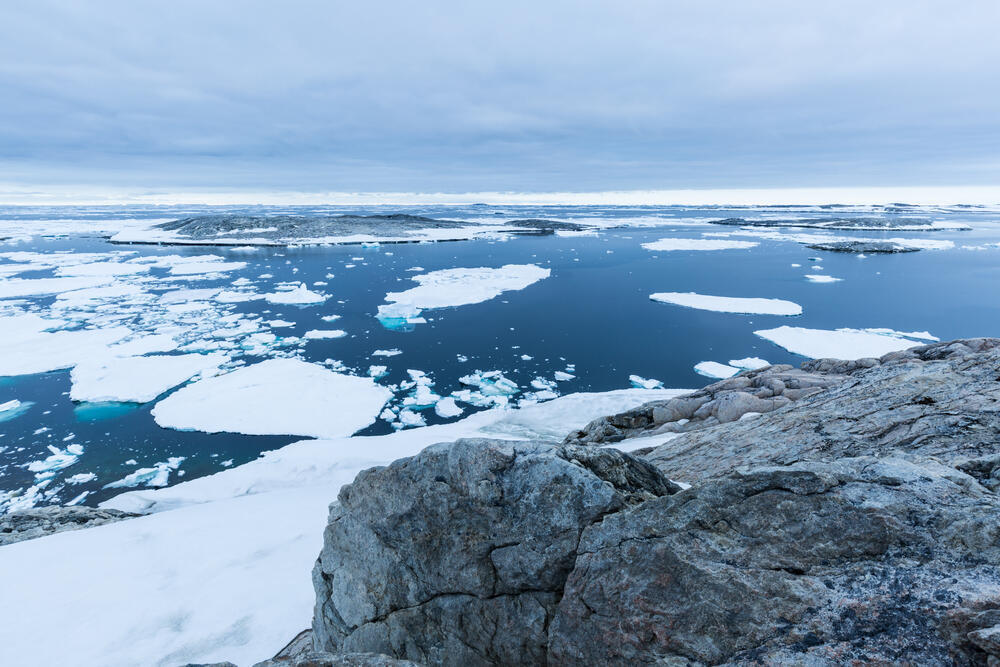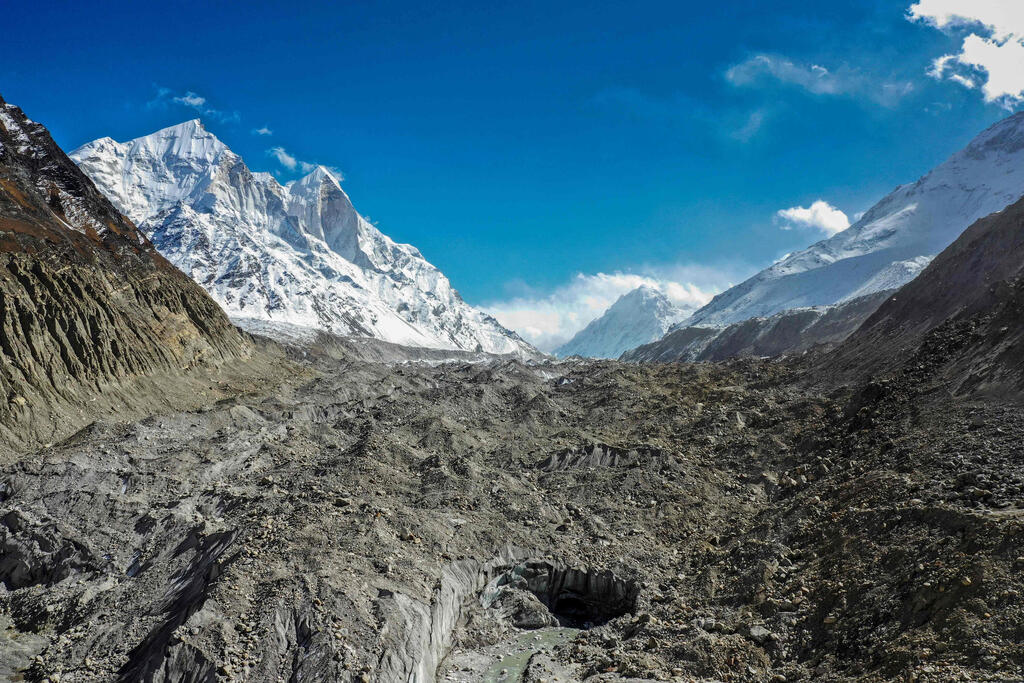For years, weather stations across the globe have consistently reported a trend of rising temperatures. This trend of global warming is largely attributed to the increase in greenhouse gas concentrations in the atmosphere. However, temperature increases vary depending on location and season. Some studies suggest that the warming rate is expected to be higher in high-altitude places due to phenomena such as snow melting, exposing darker surfaces such as rock or vegetation. Instead of solar energy being reflected by the bright snow, it is absorbed by the dark ground, leading to additional warming.
Based on these assessments, one could expect that the warming rate of Everest, the highest mountain in the world, would be exceptionally high. Situated in the Himalayas in central Asia, it acts as a natural boundary separating the Indian subcontinent from the Tibetan plateau. The glaciers of Everest are the source of some of the world's major rivers, including the Ganges, Indus, and Brahmaputra.Thus, temperature changes in Everest region have a tremendous impact. The glaciers nearby are expected to shrink significantly due to climate change, affecting the water supply for about 2 billion people. However, despite expectations, recent years have shown no noticeable change in temperature in the Everest region.
Recently, an international research group published a study analyzing temperatures recorded at the "Everest-Pyramid” station on the southern slopes of Everest, 5,050 meters above sea level. The analysis found that the average daily temperature at the station has not changed over the past three decades. However, data indicates a decline in the mass of glaciers in the Himalayas. How can this apparent contradiction be explained?
The Everest-Pyramid station is not just any monitoring station. It has the oldest continuous hourly measurements in the Himalayas, allowing for a detailed analysis of how nighttime temperatures in the station area have changed compared to daytime temperatures. The researchers found that while the average daily temperature has not changed, there have been notable fluctuations in hourly temperatures. Nighttime temperatures in the station area have shown a warming trend in recent years, while daytime temperatures have cooled, especially during summer, maintaining the average temperature stable. Other monitoring stations in the Himalayas and computational models showed a similar trend.
To try and explain the daytime cooling, the researchers used a well-known mountain weather phenomenon: mountain wind, also known as katabatic wind. The difference in altitude and the contact of the air with the cold surface of the glacier cause the air at the top of the mountain to be colder and denser compared to the air below, which is warmer and less dense. This variance in air density prompts a downward flow of wind from the mountain summit, ushering cold air downwards and causing a cooling effect. According to measurements at Everest-Pyramid station, the katabatic wind strengthens during the day, especially during the hot season.
The Cold Wind Sighs
The researchers hypothesized that the strengthening of the katabatic wind can be attributed to the presence of glaciers. While much of the Earth, including the valleys at the base of the Himalayas, has experienced warming in recent decades, the temperature near the Himalayan glaciers has remained at zero degrees Celsius. This can be attributed to the significant energy required for glacier melting, wherein the excess energy absorbed by the glaciers due to the overall warming trend is primarily utilized for melting rather than raising the temperature. Consequently, although the air at the mountain's base has warmed in recent years, and its density has thus decreased, the temperature and density of the air at the mountain's peak have not changed. As a result, the disparity in air density between the top and bottom of the mountain has increased, leading to the strengthening of the katabatic wind. The researchers were able to reproduce this explanation in computational models describing airflow near glaciers, suggesting its potential relevance to glaciers in other mountain ranges, such as the Andes and Alps.
Another perplexing question remains: why are the glaciers in the Himalayas melting at an accelerated pace in recent years? Typically, glacier melting occurs predominantly during the daytime in summer when the air temperature near the station surpasses zero degrees Celsius. What's surprising is that this melting intensifies precisely when the weather during the melting hours - daytime - experiences cooling. How did the melting of glaciers on Everest accelerate despite the mountain being cooler during these hours?
Here, too, the katabatic wind plays a role. The point where the descending katabatic wind meets the ascending winds at lower altitudes on the mountain is referred to as the convergence zone. This area typically experiences substantial precipitation. Researchers theorize that the intensification of the katabatic wind prompts the convergence zone to shift down the mountain ranges. Consequently, the precipitation formed in the convergence zone also moves downwards. Thus, the amount of precipitation falling on the glacier decreases, resulting in a reduction in the mass added to the glacier each year.
The researchers' hypothesis is based on measurements from Everest-Pyramid station, which reveal that the average precipitation in the summer months, the period accounting for approximately 90 percent of total precipitation, declined by about 50 percent between 1994 and 2013. Comparable drying trends were observed at other stations and in lakes dependent solely on precipitation, unaffected by glacier melting, at altitudes harboring glaciers. Consequently, it appears that the predominant factor driving the disappearance of the Himalayan glaciers is not increased glacier melting, but rather a reduction in the volume of precipitation they receive.



